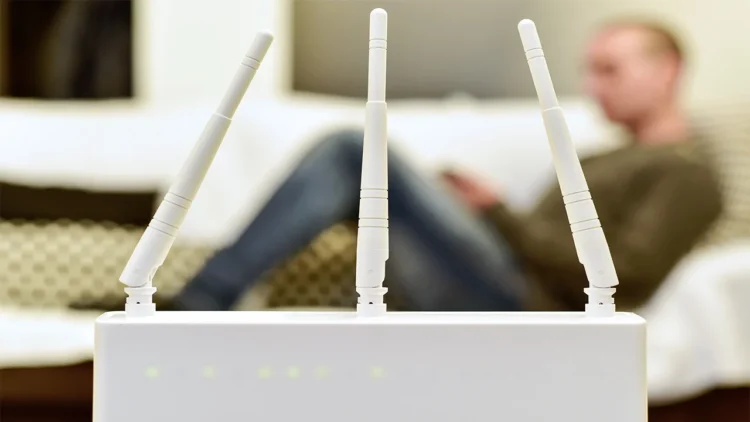In today’s digital age, a stable and reliable internet connection is essential for both work and leisure activities. However, many factors can affect the quality of your WiFi signal, such as distance from the router, interference from other devices, or even the layout of your home or office. To overcome these challenges and enhance your internet experience, investing in a high-quality WiFi antenna can make a significant difference. In this article, we will explore the best WiFi antennas available on the market, their features, and how they can help boost your internet signal.
-
Understanding WiFi Antennas
Before diving into the best WiFi antennas, it’s important to understand how they work. WiFi antennas are designed to receive and transmit wireless signals between your device and the router. They come in various shapes and sizes, each with its own unique features and capabilities. The most common types of WiFi antennas include omnidirectional antennas, directional antennas, and panel antennas.
Omnidirectional antennas radiate signals in all directions, making them suitable for general use in homes or small offices. They provide a wider coverage area but may sacrifice signal strength over long distances. On the other hand, directional antennas focus their signal in a specific direction, allowing for longer range and stronger signals. These antennas are ideal for larger spaces or situations where the router is located far away.
Panel antennas are a hybrid between omnidirectional and directional antennas. They offer a wider coverage area than directional antennas but with better signal strength than omnidirectional ones. Panel antennas are often used in outdoor settings or to cover large areas like warehouses or campuses.
-
Top WiFi Antennas on the Market
2.1 Alfa AWUS036ACH
The Alfa AWUS036ACH is a highly regarded WiFi antenna known for its exceptional performance and range. It supports the latest 802.11ac WiFi standard, providing lightning-fast speeds and improved stability. Equipped with dual-band technology, this antenna can operate on both the 2.4GHz and 5GHz frequency bands, reducing interference and congestion. Its detachable antenna allows for flexibility in positioning, ensuring optimal signal reception.
2.2 TP-Link TL-ANT2409A
For those seeking a budget-friendly option without compromising on quality, the TP-Link TL-ANT2409A is an excellent choice. This omnidirectional antenna offers a 9dBi gain, significantly extending the range of your WiFi signal. Its compact design makes it easy to install and position, making it suitable for both indoor and outdoor use. The TL-ANT2409A is compatible with most routers and access points, making it a versatile option for various setups.
2.3 Ubiquiti Networks UAP-AC-M-PRO
If you’re looking for a high-performance WiFi antenna for outdoor use, the Ubiquiti Networks UAP-AC-M-PRO is worth considering. This weather-resistant antenna is designed to withstand harsh conditions while delivering exceptional coverage. With its dual-band functionality and advanced antenna technology, it can provide reliable internet access over long distances. The UAP-AC-M-PRO also features multiple mounting options, allowing for flexible installation.
2.4 Netgear Nighthawk AC1900
The Netgear Nighthawk AC1900 is a popular choice among gamers and heavy internet users due to its impressive speed and range capabilities. This dual-band antenna supports 802.11ac WiFi standard and offers up to 1900Mbps of combined wireless speed. Equipped with three detachable antennas, it provides excellent coverage and signal strength throughout your home or office. The Nighthawk AC1900 also comes with advanced features such as beamforming technology, which focuses the signal towards connected devices for improved performance.
-
Factors to Consider
When choosing the best WiFi antenna for your needs, several factors should be taken into consideration. Firstly, consider the size of the area you need to cover. If you have a small apartment, an omnidirectional antenna might suffice. However, for larger spaces or outdoor use, a directional or panel antenna would be more suitable.
Secondly, check the compatibility of the antenna with your existing router or access point. Ensure that they support the same WiFi standards and frequencies to avoid any compatibility issues. Additionally, consider the antenna’s gain, which determines its signal strength. Higher gain antennas provide better range but may be more directional.
Lastly, installation and positioning play a crucial role in maximizing the antenna’s performance. Experiment with different placements to find the optimal position for signal reception. Keep in mind that obstructions such as walls or furniture can impact signal strength, so try to minimize these obstacles.
-
Conclusion
A reliable WiFi connection is essential in today’s connected world, and investing in a high-quality WiFi antenna can greatly improve your internet experience. Whether you need to extend your WiFi range, boost signal strength, or overcome interference issues, there is a wide range of antennas available to suit your specific needs. From the Alfa AWUS036ACH’s exceptional performance to the budget-friendly TP-Link TL-ANT2409A, each antenna offers unique features and capabilities. Consider factors such as coverage area, compatibility, and gain when selecting the best WiFi antenna for your setup. With the right antenna in place, you can enjoy faster speeds, increased stability, and seamless connectivity throughout your home or office.



